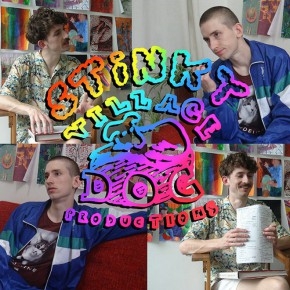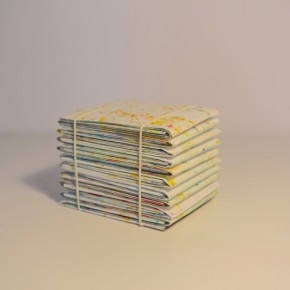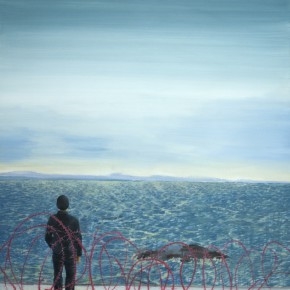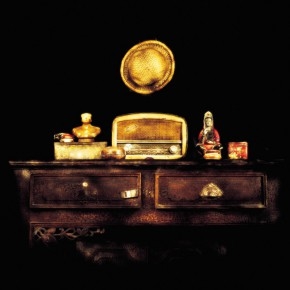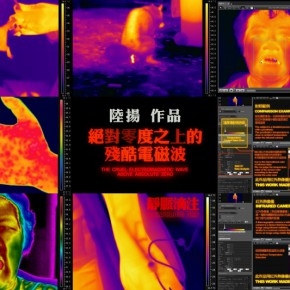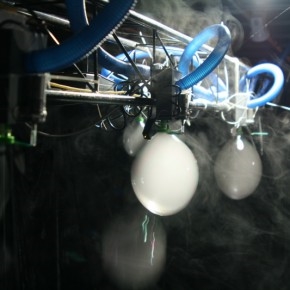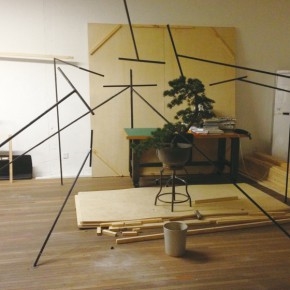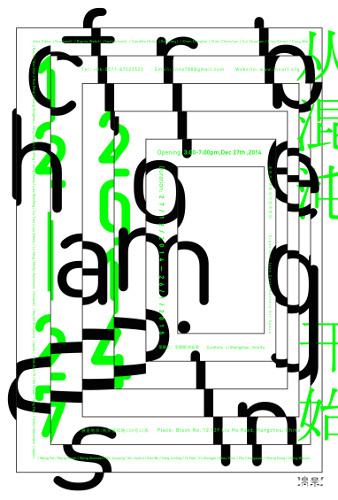
Preface to Begin from Chaos
“May we begin from Chaos” — Marcel Duchamp
The official inauguration of the Situationist International (SI) was announced in 1957 at an international convention staged in Italy. Employing both theoretical and pragmatic means, in the decade that followed the SI set to work chronicling and resisting what they referred to as “The Society of the Spectacle” (La Société du spectacle), searching for everyday, revolutionary means by which to unite the artistic with the political, attempting via practice to effect transient caesuras to subvert this spectacular, social entity. Today, almost sixty years after Guy Debord observed “The whole life of those societies in which modern conditions of production prevail presents itself as an immense accumulation of spectacles. All that once was directly lived has become mere representation”, what he described remains a reality that holds us firmly within its enclosure, perhaps even more immaculately so than it did before, having become all that more discrete in its means. As far as our present “reality” is concerned, from here, we proceed ceaselessly both to further clarify and to obfuscate. For all we might rebel, there is nothing we can do to prevent the spiralling of our alienation. Nonetheless, to hope for a chance to begin again with history is an impossible delusion; at the same time, to attempt simply to repeat certain instances from the past is incongruous. All that remains for us to behold is the palimpsest of the present, innumerably marked with traces of former dissent. This is our sole horizon, inseparable from the waters of the sea. There is no chaste, extractible origin to which we might return, no hope of some perfected other’s falling into our midst and proffering our salvation. Suppose however we were to do away with all accessories to fantasy, escape and diversion; accepting instead the inevitability of our circumstance, the pressing veracity of this moment, perhaps then the ground beneath our feet might become more visible, more solid. After all, it is the intangible, imbricate nature of this firmament that offers itself as a base for our activities.
So, today, given this as our basis, what kind of role does - or rather should art perform? What specific properties distinguish it from all the other disciplines’? These are postulations we never tire of advancing.
In one essay, Professor Sarat Maharaj divides knowledge into two kinds, namely the “know-how” and the “no-how”, proceeding thus to propose the notion of “visual art as knowledge production”. In Professor Maharaj’s opinion, this engine of knowledge production would adopt “thinking through the visual” as its means, differing from other modes of "visual thinking” that merely “establish visual systems based on existing linguistic models”. Albeit the former means might still employ these existing, linguistic models, their aim is one rather of segueing into another, more shadowy, amorphous and chaotic place beyond their borders. “Thinking through the visual” thus differs from any techniques employed in other disciplines.Being exempt from specificities of field, it pervadesratherwithin thespaces of the “whatever”, an unpredictable ebb and flow of potentialities and propensities distinct from other modes of “know-how” knowledge.
From the moment we encounter the spectacle, already this becomes a form of social relation, presenting us with the conundrum of a reifying world view. Given however to art’s ability to engage in such creatively febrile, anarchic conditions - this and its “institutional drive” - perhaps we might just come upon a dimly lit channel of possibility to which it alone is party. From inside the society of the spectacle, the visual assumes prime position as both medium and method. Within these currents, reality and the spectacle mutually excluding one another, can art thus offer us an ineffable, ever-changing breath of fresh air, permeating its stream to rupture and deconstruct all pre-existing configurations of imagery, symbolism, space and time, shifting the boundaries of accepted, “common knowledge”, agitating conventional orders to furnish us ceaselessly with new, perceptual constructs? This, chaotic state of creativity is close to what Alain Badiou refers to in terms of an “ambush in the night”: something latent, aimless, unpredictable and - because of this - all the greater in terms of its contingent potentials.
For the time being, we perceive the present exhibition more or less as a cogent signal amid the white-noise of the present, a non-stop transmission, calling out to all those who take art as a means to experiment and engage in all kinds of “knowledge production”. With this exhibition we hope to arrange a platform for common understanding, a structure that falls beyond the remit of classification and remains open to dissent. To return again to chaos doesn’t mean to say we aim to imitate Pan Gu (folkloric creator of the universe in Chinese mythology), “rending chaos to hew out the realms of heaven and earth”. For us, such a finite “realm” is inconceivable. Regardless of whether it be an end to ones labours or the origin of the universe, there can be no one single, perfect and perennially defined moment. What we need rather is an unabated movement in and out of this chaos, remaining vigilant to all manner of habitual “norms”, prizing open each minute fold in the horizon and setting out repeatedly a-new in unending departure, convening within this repetition like sunlight refracted in Sisyphus’ sweat. Certainly, we do not do this to no avail, for the process itself is elating. Taking this restricted trajectory and folding this then in upon itself again and again, we conceive of something limitless. Beginning in chaos, our destination (if this exists) lies somewhere far off in the distance.
Li Shengzhao
2014
About the exhibition
Curator: Li Shengzhao, Inna Xu
Artists: Alex Gibbs, Bignia Wehrli, Candida Höfer, Chen Dongfan, Chen Chenchen, Cui Shaohan, Ding Shiwei, Fang Wei, Guo Xi, Guo Yilin, Hua Peng, Huang Songhao, Jiang Zhuyun, Li Ming, Liang Manqi, Liao Wenfeng, Liu Tian, Lou Shenyi, Lu Yang, Merijn Kavelaars, Noriko Shinohara, SAN XIAN TV, Shi Chuan, Yixin Tong, Ushio Shinohara, Wang Fei, Wang Kewei, Weng Shanwei, Wu Junyong, Wu Juehui, Xiao Bo, Yang Junling, Ye Nan, Yu Qiongjie, Zhou Yilun, Zhu Changquan, Zheng Hong, Zheng Wenxin
Date: 2014.12.27-2015.01.26
Opening: 2014.12.27, 15:00
Open hours: 10:00-17:00 (Closed on Mondays)
Venue: Block No. 12,139 Liu He Road, Hangzhou, China
Courtesy of the artists and Inna Art Space.


